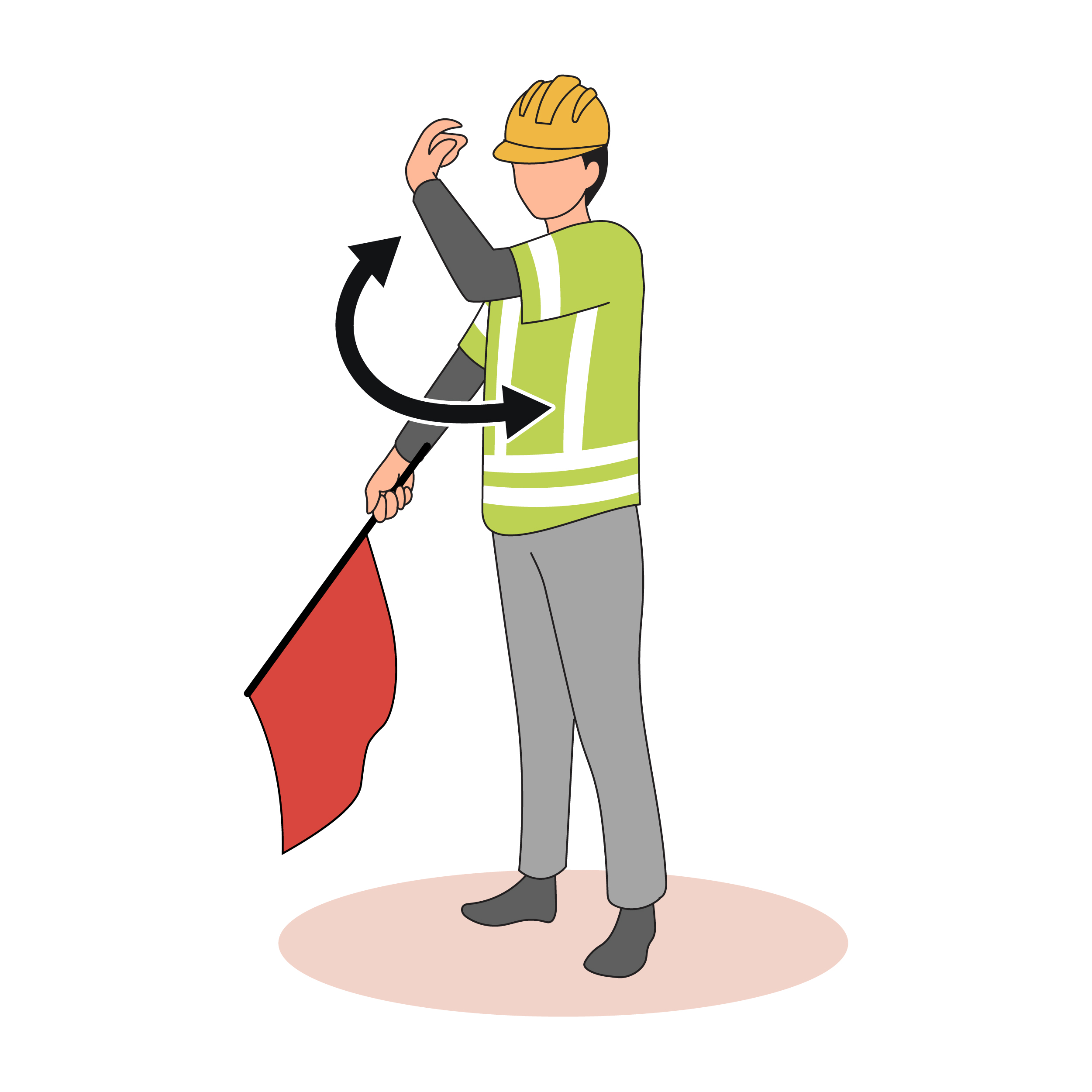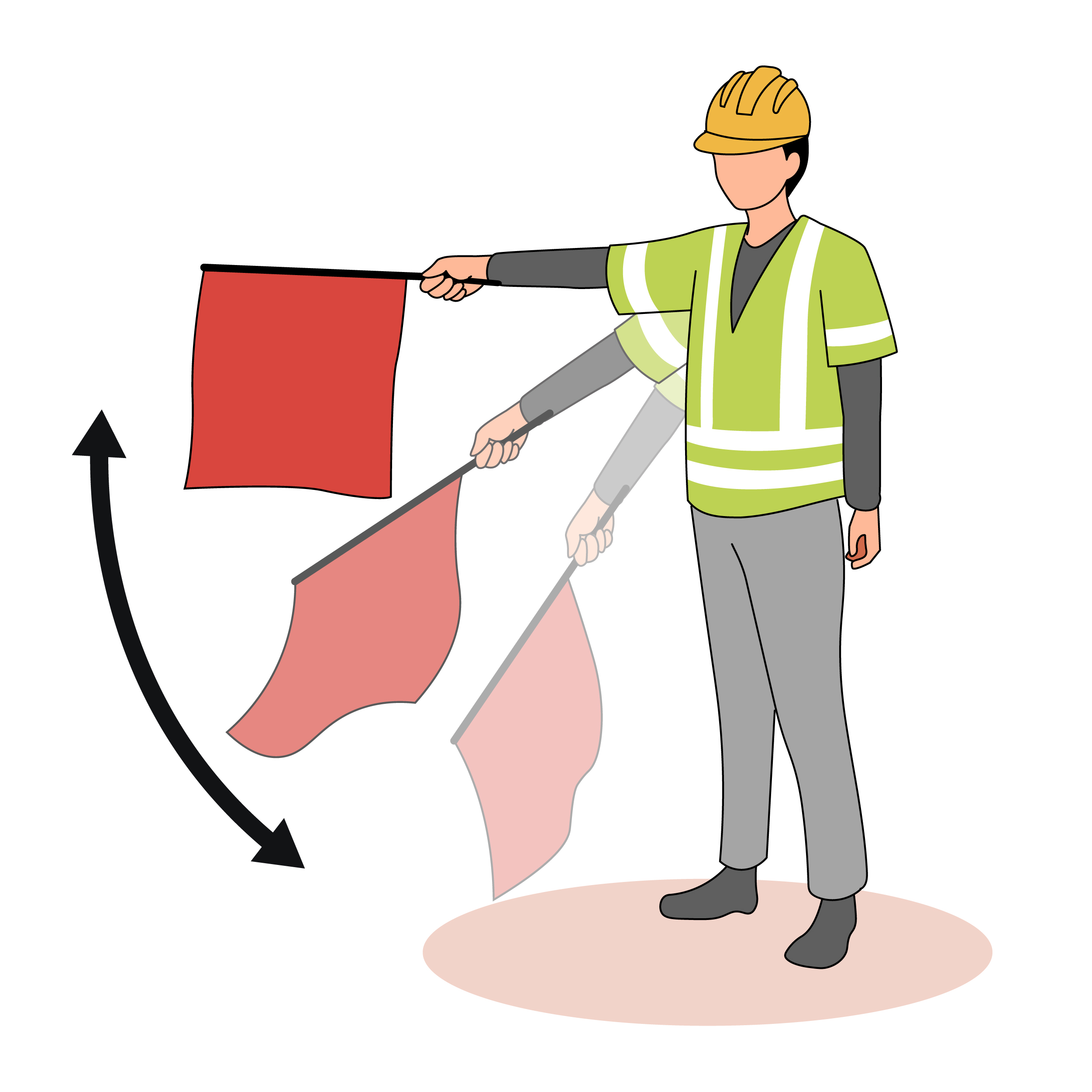Published on

Although it is recommended that flaggers use STOP/SLOW paddles to signal to traffic in work zones, some states require the use of red flags in particular situations.
The MUTCD states that flags shall:
(MUTCD 6D.03)
To STOP road users with a red flag:

Face road users and extend the flag staff horizontally, so that the full area of the flag is visible hanging below the staff. The free arm should be held with the palm of the hand above the shoulder-level, toward approaching traffic.
To tell road user to PROCEED with a red flag:

To direct stopped road users to proceed, lower the flag and motion with your free hand for road users to proceed. Do not wave or motion with the flag.
To tell road users to SLOW DOWN using the flag:

Face road users and slowly wave the flag in a sweeping motion from shoulder-level to straight down, without raising your arm above a horizontal position. Keep your free hand down.
These signals are covered in Figure 6D-1 in the MUTCD 11th edition.
Learn more about flagger signals and how to safely set up a work zone in our Online MUTCD Flagger training!
Share this article

Evergreen Safety Council is proud to be endorsed by the American Association of Safety Councils and Specialized Carriers and Rigging Association.
We offer online, in-person, and private group training for each of our programs.
Choose an option below to get help with a class or a certification.
Need a new certification card? Fill out this form to request a replacement.
Download your materials, get help with your tech, or find out what you need to complete before the day of class.
Minimize downtime, disruption, and expense by having one of our experienced instructors train your staff, at your facility.
View our growing library of informative safety articles.
You have questions, we have answers. View commonly asked questions here.
Access your account page on our registration system or training portal.
Since 1932, we’ve been empowering people to achieve their potential by training them to stay safe on the road and on the job.